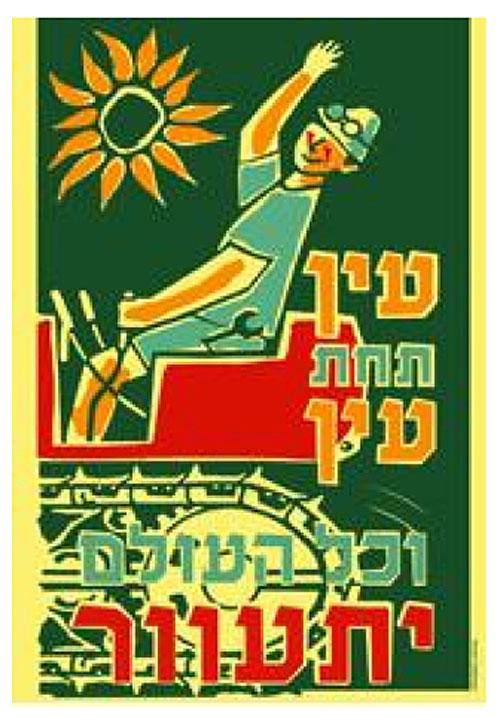Hebrew translation:
An eye for an eye and everyone goes blind
______________________________
Curator's note: This poster is a remix of an original (1954) poster by Zvi Berger "Youth to the Village" which may be viewed here
_________________________________________
"In An Eye for an Eye and Everyone Goes Blind, Ronen Eidelman (b. 1971) drew on a number of traditions to communicate his message. The poster stylistically referenced posters created during the early years of the State that encouraged Jewish immigrants to participate in reclaiming agricultural land. By placing the Gandhi quote over a familiar image of an early Zionist settler driving a tractor, Eidelman asked the viewer ― What happened to the dream? In a climate where bulldozers were destroying Palestinian houses and olive groves as frequently as they were being used for agricultural or urban development, Eidelman‘s poster used complex layers to help the viewer contemplate the important message of how the situation reached its current state. An Eye for an Eye illustrated Eidelman‘s assertion that 'posters can be complex.' The more knowledge you have the more layers you can read into it.
An Eye for an Eye exemplified Eidelman‘s approach which builds off his belief in the power of history. His preference for remixing visual elements from the legacy of old communist, socialist, and futurist posters illustrate his attitude that design is not about creating new; it‘s about using what already exists. His stylistic approach of historic quotation supports his belief that 'my style is that I have no style.' Eidleman, like the designers who worked before him, emphasizes the importance of a design process in which the visual style grows out of the concept. His approach to historic quotations challenges the postmodern notion that all parody has devolved into pastiche."
Source: "Peace, Politics and PostZionism: Contemporary Left-Wing Graphic Design in Israel" by Bareket Kezwer

